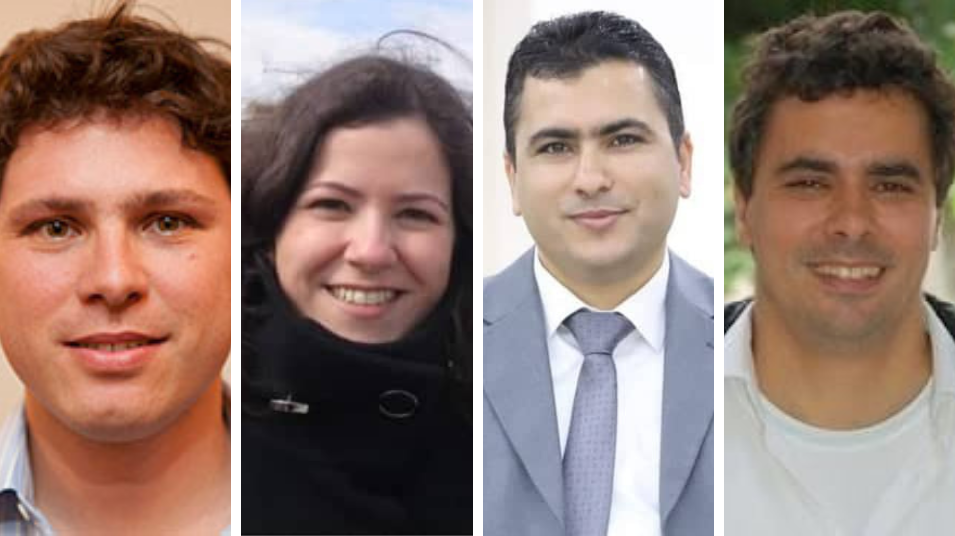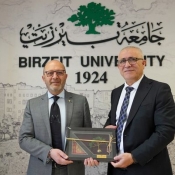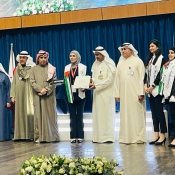Mathematics professor published new research article in journal of optimization
Abdelrahim Mousa, assistant professor of Mathematics at Birzeit University, together with three international scholars in his field, published a new research article titled “Optimal Consumption, Investment and Life-Insurance Purchase under a Stochastically Fluctuating Economy.”
This research was published in the journal Optimization, published by Taylor and Francis in the United Kingdom. This prestigious journal is registered in the Scopus World Ranking and is considered as one of the most important journals in the field of applied mathematics (control and optimization.)
The international collaborators to the publication are:
- Diogo Pinheiro, associate professor at the Department of Mathematics, Brooklyn College and Graduate Center, New York
- Susana Pinheiro, assistant professor at the Department of Mathematics and Computer Science, Queensborough Community College, New York
- Alberto Pinto, professor of mathematics at the Department of Mathematics and LIAAD, INESC TEC, Faculty of Science, University of Porto, Portugal
In this paper, the authors reflected on the problem of optimal consumption, investment, and life insurance selection and purchases subject to an underlying financial market whose asset prices evolve according to a linear stochastic differential equation with coefficients depending on an additional real-valued continuous-time stochastic process reflecting the state of the overall economy.
Such process may be considered an index aggregating economic information such as the GDP growth rate, interest rates, inflation rates, unemployment rates, the governmental debt to GDP, trade balance, and the prices of natural resources and commodities, among many other pieces of relevant information. Given the regular flow of such economic information available to financial market observers nowadays—multiple pieces of information published daily—as well as the market agents’ expectations toward the future evolution of such pieces of information, it seems only natural to model the time-evolution of such a process by a stochastic differential equation of diffusive type. The goal was to better understand the choices of a wage-earner who is simultaneously a saver and investor, with access to both a financial market such as described above and an insurance market composed by multiple competing insurance companies. The wage-earner aims to maximize a given expected utility which encodes their preferences regarding consumption, wealth, and protection against untimely death as provided by life-insurance.
To the best of the authors’ knowledge, this is the first time the dependence of life-insurance purchase on an external factor, which may be regarded as the overall state of the economy, is considered and comprehensively analyzed. The authors perform such analysis by a variety of means.
- First, they derive feedback controls depending on the optimal control problem value function and its derivatives for general families of utility functions (they consider a more general class of utility functions than used in the current literature to describe the wage-earner preferences concerning the eventual life-insurance payment to his family in case he dies before retirement).
- Second, they find explicit closed-form formulas for both the optimal controls and the value function in the case of discounted constant relative risk aversion utilities and “frozen economy dynamics.” This allows a rather detailed analysis of the parametric dependence of both the value function and the optimal controls with respect to the variable representing the state of the economy.
- Finally, they perform an illustrative numerical experiment under the assumption that the economy dynamics are given by an Ornstein-Uhlenbeck process, well known to be a mean-reverting Gaussian and Markov process.
Dr. Mousa noted the idea of this research was initially presented at the 15th EUROPT Workshop on Advances in Continuous Optimization (2017) in Montreal, Canada. The participation in this workshop was valuable and the notes taken would enrich the research. The updated version of this research was presented at the International Congress of Mathematicians (ICM2018) in Rio de Janeiro, Brazil. Good feedback was obtained after discussing more related ideas with Prominent mathematicians and experts. It was then presented at the International Conference on Industrial and Applied Mathematics (ICIAM2019) in Valencia, Spain.
To access the full research, click here.







